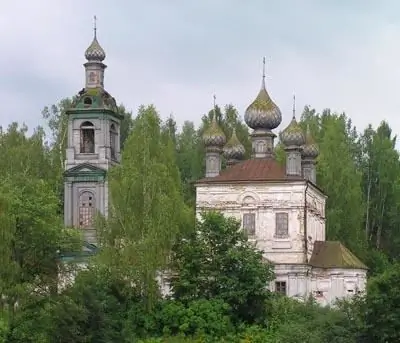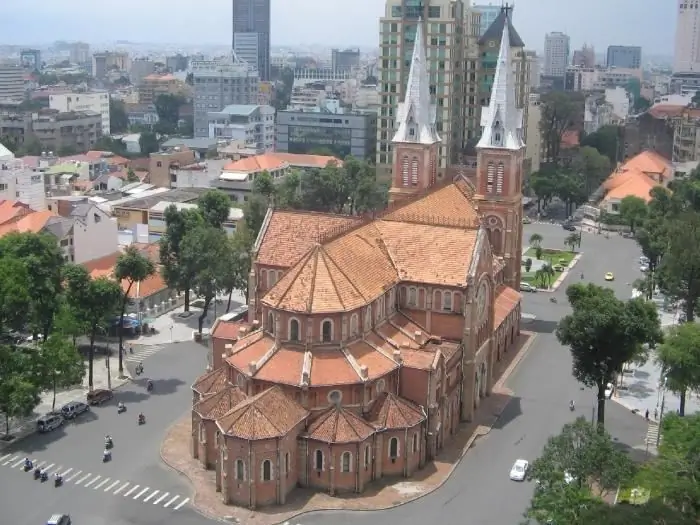- Author Harold Hamphrey [email protected].
- Public 2023-12-17 10:06.
- Last modified 2025-01-24 11:10.
The village of Starominskaya is located in the north of the Krasnodar Territory. This is one of the very first settlements of the Black Sea Cossacks. The station has a long history. It developed, was occupied by the Germans and partially destroyed. Like a phoenix bird, the settlement revived, only to be forgotten again.
Name history
Starominskaya (Krasnodar Territory) village was founded in 1794. The settlement became one of the first 40 kurens of the Cossack Black Sea army. The village got its name from the village of Mena, located on the Desna River. At first the settlement was called Mensky, then it was renamed into Minsk. Over time, in 1842, the kurens acquired the status of villages. This is how Starominskaya appeared.
Development of the village
In 1802, there were 15 households in the village. Gradually, the Cossacks came to their permanent place of residence. In the period from 1821 to 1825, the settlement was replenished with immigrants from the Chernigov and Poltava provinces. In 1861, there were already 700 households and almost five thousand inhabitants in the village. In 1863, the very first elementary school appeared in the settlement.

The village was gradually overgrown with drinking houses, shops, but the improvement left much to be desired. The streets were not paved, the inhabitants were suffocating from the dust and stuck in the mud of the road. In 1869, the villages began to acquire clear boundaries. Starominskaya became the largest in terms of area. Began to divide into the outskirts.
Two railways were laid near the village. The first, from Yeysk to st. Sosyk, appeared in 1809, and a year later the first trains went along the railway track. The second railway went from Kushchevskaya to Yekaterinodar. Stanitsa Starominskaya became a major railway junction, and this accelerated the development of the settlement. Over time, it became known as the Kuban Northern Gate.
During Soviet times
After the revolution, in the spring of 1920, Soviet power was established in the village. Active territorial and administrative changes began. In 1922, a volost division was introduced in the village. The first collective farm with the name "Kubanets" appeared. It employed 14 families. In 1924, the Starominsk District was created, which entered the Don District and became subordinate to Rostov-on-Don.

In 1926, the first newspaper appeared in the village. Districts and collective farms gradually grew. In 1928, the largest were "Combine" and "Leninsky Way". Gradually, large formations were divided into many small ones. In the early 30s, Art. Starominskaya acquired her own butter factory. In 1935, the first high school appeared.
After the formation of the Krasnodar Territory
In 1937, after the advent ofKrasnodar Territory, the area began to belong to the Kuban. In 1939, there were already 17 schools in Starominskaya Stanitsa, the same number of red corners and clubs. The People's Palace of Culture was opened. There were 24 libraries, three reading huts and a cinema. 25 stores and two food stalls were opened. Has earned its own power plant. Four doctors and more than 20 paramedics worked in the Starominsk district.
The period of the Great Patriotic War
During the Great Patriotic War, the village of Starominskaya was deserted by more than 12 thousand inhabitants who went to war. During the Second World War, more than 7,000 people died in the region. From 1942 to 1943 the village was occupied by German troops. The area suffered massive damage.
Post-war years
Since 1946, farms began to rebuild, production was established, construction was intensified. New well-appointed houses appeared. Farms began to flourish. In 1950, the first hydroelectric turbine was built and electricity appeared. In 1952, a vocational school was opened in Starominskaya village, which trained machine operators.

In 1958, new settlements appeared in the region. A year later, the first asph alt road began to operate. There were bus lines. From 1962 to 1966, perestroika was underway, and the village of Starominskaya ceased to exist on the maps as an independent territorial unit. Then the district joined the Leningrad.
Today's page
Today the village is a small modest town. It only works for a fewenterprises that almost completely provide the necessary goods to local residents. There are large farms, a railway station. There are five schools, a boarding school. There is a Palace of Culture. There are music, art and sports schools. A cinema, a clinic and several banks are open.






